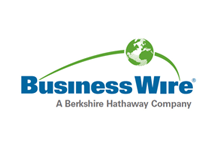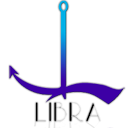The Worldwide Cosmetic Preservatives Industry is Projected to Reach $562 Million by 2027 - ResearchAndMarkets.com
The "Global Cosmetic Preservatives Market by Type (Paraben Esters, Formaldehyde Donors, Phenol Derivatives, Alcohols, Inorganics, Quaternary Compounds, Organic Acids & Their Salts), Application and Region (North America, Europe, APAC, RoW) - Forecast to 2027" report has been added to ResearchAndMarkets.com's offering.
The cosmetic preservatives market is estimated to be USD 410 million in 2022 and is projected to reach USD 562 million by 2027, at a CAGR of 6.5% between 2022 and 2027.
Increase in female working population will support the growth of cosmetic preservatives market
There is an increase in participation of women in workforces globally. According to Statista, India accounted for a total 36% share of the female population working in organized sectors in 2021. According to a report from the European Union Commission, the population of working women accounted for a 66.2% share in 2020. According to the Bureau of Labor Statistics, the share of the population of working women in the US in 2020 was approximately 56.2%. The increase in the working population of women enables financial independence, allowing them to make their own decisions.
Globally, women are the major consumers of cosmetic products. Therefore, financial independence is expected to boost the consumption of cosmetics and skin care products, thereby increasing the consumption of cosmetic preservatives.
Stringent regulatory norms
Cosmetic products contain a range of ingredients. These ingredients cover cosmetic preservatives, cleansing agents, and unique fragrances. Regulatory bodies are continuously taking initiatives to prohibit or limit the use of ingredients that cause health issues. Stringent rules and regulations have been implemented by governments regarding the disclosure of product ingredients utilized in the manufacture of products.
The Food and Drug Administration (FDA) of the US provides the legal framework and guidelines for the usage and prohibition of particular preservatives. The Federal Food, Drug, and Cosmetic Act (FFDCA) passed by the FDA regulates the usage of cosmetic preservatives in cosmetic products in the US. In India, the Central Drugs Standard Control Organisation (CDSCO) regulates the usage of preservative products in India. The Drugs and Cosmetics Act (1940) and rules (1945) and the Bureau of Indian Standards implement the laws and regulations for the manufacture of cosmetic products and preservatives.
Increasing focus on male-specific cosmetics
It is a general belief that appearance and presentation matter. People are inclined to use products that make them look good. There is a significant demand for male-specific cosmetics ranging from moisturizers to anti-agers to mud masks. Numerous problems are faced by younger males in general related to oily skin, acne, hair fall, and wrinkles, among others. All these problems can be overcome with awareness about and the use of the proper cosmetics. Manufacturing companies, thus, have lucrative opportunities for the development of products specifically targeting the male segment.
Increasing awareness about the usage of cosmetic products among men offers major opportunities for cosmetic product manufacturers targeting individual issues faced by men. This opportunity widens the market share and helps penetrate the newer application segments of cosmetic products. This, in turn, increases the growth of the cosmetic preservatives market.
High prices of organic and natural cosmetic preservatives
The high costs of organic and natural cosmetic preservatives which are in demand from the market is a significant challenge. Organic preservatives are preferred over traditional preservatives such as parabens, formaldehyde donors, and others by manufacturers of personal care products. Organic or natural preservatives are preferred as they do not lead to skin problems. Costs of preservatives increased post the pandemic due to the shortages in the supply of high-quality products. Though there is high demand for natural and organic cosmetic preservatives, the high costs of preservatives pose a challenge for cosmetic manufacturers. The market for organic and natural cosmetic preservatives is expected to grow at a significant pace in the European and North American markets.
Asia Pacific region is expected to grow with the highest CAGR during the forecast period
Asia Pacific is the fastest-growing market for cosmetic preservatives globally. Improved lifestyles, increasing cost of living, increasing population, and high economic growth of emerging economies such as China, Thailand, Indonesia, and India will led to the growth of the cosmetic preservatives market in the Asia Pacific. The increasing population and availability of affordable products will be primarily responsible for the high demand in the region. Increasing awareness among the population about the effects of the environment on skin and hair is another factor leading to high demand of the cosmetic preservatives during the forecast period.
Market Dynamics
Drivers
- Increase in Purchasing Power of Consumers
- Increase in Female Working Population
- Shelf-Life Enhancement
Restraints
- High Cost of Organic Products
- Stringent Regulatory Norms
- Possibilities of Skin Infections
Opportunities
- Increasing Demand in Asia-Pacific Region
- Rising Demand for Natural and Organic Preservatives in Cosmetics
- Increasing Focus on Male-Specific Cosmetics
Challenges
- Paraben-Free Preservatives in Cosmetics
- High Price of Organic and Natural Cosmetic Preservatives
Companies Mentioned
- AE Chemie Inc.
- Akema S.R.L.
- Ashland Group Holdings Inc.
- BASF Se
- Brenntag Ag
- Chemipol S.A.
- Cisme Italy S.R.L
- Clariant Ag
- Cobiosa
- Dadia Chemical Industries
- Evonik Industries Ag
- Gujarat Organics Limited
- International Flavors & Fragrances Inc.
- Isca UK Limited
- Kumar Organic Products Limited
- Lanxess
- Never Not Skincare
- Sachem Inc
- Salicylates & Chemicals Pvt. Ltd
- Sharon Laboratories
- Spectrum Chemical Mfg Corp.
- Struchem Co Ltd.
- Symrise Ag
- The Dow Chemical Company
- Thor Group Ltd.
For more information about this report visit https://www.researchandmarkets.com/r/yem3d9
View source version on businesswire.com: https://www.businesswire.com/news/home/20220726005769/en/




